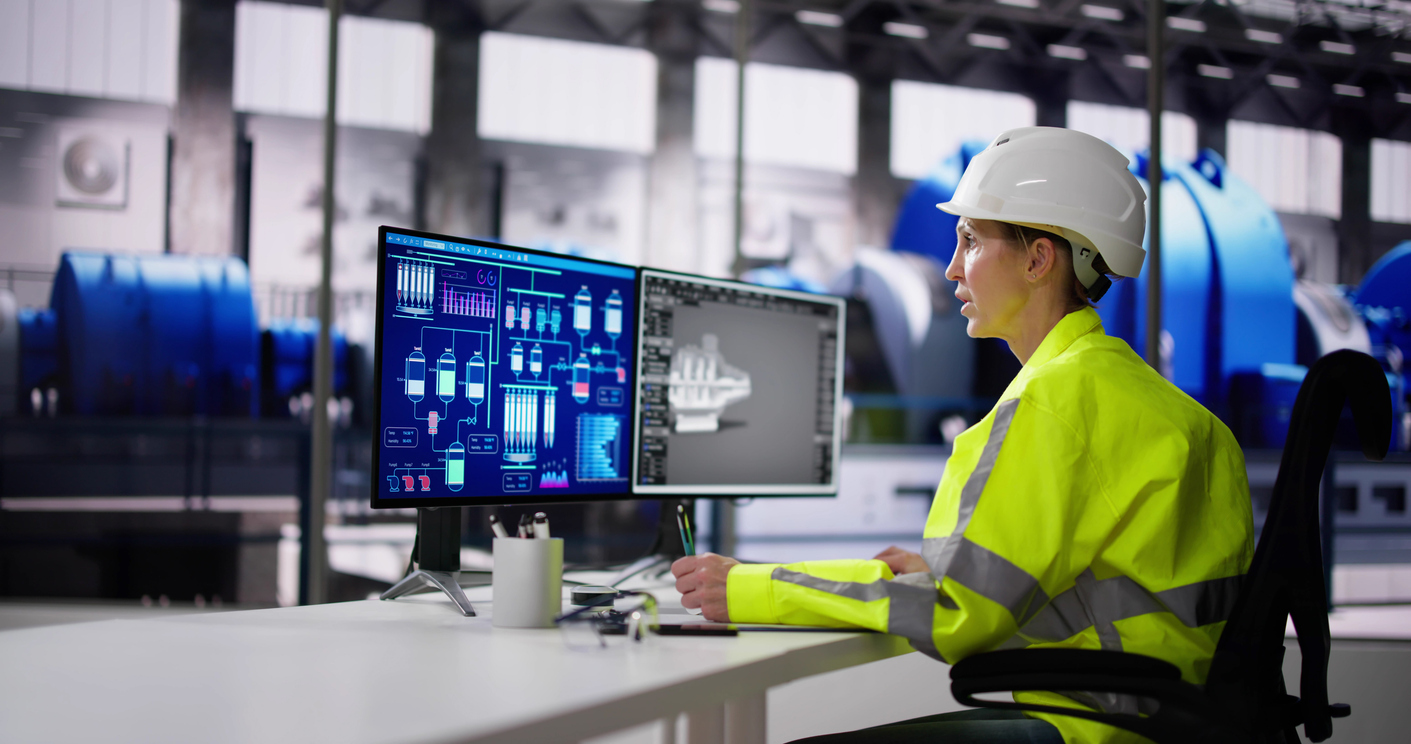“Electric vehicles and autonomous driving, which is still a dream for all OEMs, will change everything and have a massive impact on all industries no matter whether they are directly connected to automotive innovation or not.”
– Igor Ličanin, Engineering Lead, HTEC
In the quote above, Igor Ličanin, an engineer at HTEC who leads a team of automotive industry experts, refers to how the automotive industry will soon see a whole new era of consumers who expect more safety, flexibility, and integration in their daily driving experience. Yet, he also believes that the lure of private car ownership will not be going away any time soon.
Igor tapped into his extensive background in the automotive field and burning enthusiasm for building solutions that reimagine the automotive experience to offer his perspective on automotive innovation, the impact of EVs, the opportunities for OEMs to get ahead of the curve, and much more.
Recently, Jim Farley, the CEO of Ford Motor Company, pointed out that the market is evolving rapidly towards electric and that OEMs that can’t transition rapidly towards EVs will be in the crosshairs of industry disruption. Should his warnings be taken seriously?
Igor: Major automotive companies have always been striving for advancements in this industry, and some of the biggest technological breakthroughs came straight from them. Since the beginning of the automobile, the whole industry has been striving for luxury and convenience as the primary consumer. And through history, the focus moved from luxury and convenience to more accessible and available cars for everyone.
Also, everything connected to the automotive industry must move forward. Today, the big concerns are keeping greenhouse gases to a minimum, making our planet greener, and improving overall living conditions globally. I think that the major automotive producers have now realized that emissions and the whole system have to abide by those rules. According to recent research, the European Union wants to reduce these emissions to zero by 2050.
However, it’s not easy to move to electric vehicles because of current technological and governmental issues. One of the significant issues at the moment is the availability of charging stations. According to the research, 49% of the people interviewed said that they don’t want to have an electric vehicle before they can charge it normally and as frequently as they would fill up their tanks at gas stations.
Electric cars and the Internet of Things (IoT) are moving vehicle connectivity forward. And, while Jim Farley is pretty much right about major OEMs and their striving towards the electric vehicle as a business model that will help them succeed, I believe this trend will come to this stage in all its glory in 10 to 15 years. Until then, we will probably see many more changes in the IoT within the standard cars and, of course, try to solve issues related to electric vehicles, including batteries, transmission systems, power inverters, etc.
Consumer focus has moved from convenience and simplicity to prioritizing sustainability and redefining notions of “ownership.” This is the time for OEMs to take automotive innovation seriously in line with technological progress and human change. What opportunities do OEMs need to seize to holistically reimagine the automotive experience?
Igor: In the last decade and especially in the last five years, an evolving approach to the engineering process is becoming more noticeable. Conventional thinking and priorities are rapidly changing and are constantly pushing boundaries to deliver better, innovative, and often pioneering solutions.
What was before accepted as a primary focus in developing vehicles is now becoming a small part of automotive innovation. Considering a vehicle as a global product and catering to the numerous needs of the market demands a shift towards a more holistic view that combines technology with human needs.
When moving towards a more holistic experience, OEMs should focus on:
- Leveraging online digital channels to create new sales experiences
- Taking the lead in driving the sustainability agenda forward
- Levelling up the in-car experience to make vehicles safer
- Building more software-defined vehicles to give consumers a more interactive and personalized experience
In my view, OEMs should address not just the current business, technological, and environmental needs, but also be robust enough to answer the ever-growing challenges in a rapidly evolving future.
Moving on to the trends shaping the industry. Take a concept like mobility, also known as a “freedom machine.” How is the future of mobility shaping the world as we know it? Are we moving toward more shared mobility, mobility as a service? Or will the automobile continue to be a personal expression?
Igor: To me, these are two branches that will be continuously developed in the future. Cars, at least in my opinion, will never stop being a highly personal experience. And that feeling of freedom to drive anywhere will never disappear. I think that’s part of human nature.
But again, moving from this personal experience towards a more distributed, shared driving is a must. The number of people on this planet is growing; the number of fossil resources is rapidly going down. The solutions must be created, and they must be created fast, very fast.
Take a look at the studies which say that by 2050, almost 60% of the entire human population will be situated in urban cities. In that case, it means that issues related to public transportation and general commuting have to be resolved in another way. So, I would say yes, mobility as a service will rapidly grow. And we will definitely see a revolution within 10 years from now. And it also depends on what kind of scale we are talking about. If we are talking about the overall human population on Earth, it is going to be impossible. People will always need transportation.
But whatever is done in the European Union as a standard will come here within 10 to 15 years, meaning that a big part of the mentality in huge urban centers will change. Still, I truly believe that we will always have these two polarities, depending on where you are.
Let’s look ahead 10 years. Paint a picture of automotive innovation and the impact it has on other industries.
Igor: I have experience working in different industries that are closely connected to the automotive industry. And if we look at the period 10 years from now, I believe that the Internet of Things will be highly developed compared to what it is now. We will see vehicles connected to everything, from the environment to people and smartphones.
Next, mobility as a service will thrive, providing people with a chance to use shared transportation. This will impact every industry globally. For example, if we talk about logistics, major distributing companies and online sellers will leverage the power of automated transportation, where the vehicle does not necessarily need to be a car. It can be a drone or a taxi robot. And it doesn’t stop there! It will also massively influence the health industry, and reduce the pollution and noise within the city, and improve the quality of life at the same time. It may not directly impact some of the industries, but they will undoubtedly reap the benefits.
Electric vehicles and autonomous driving, which is still a dream for all OEMs, will change everything and have a massive impact on all industries, no matter whether they are directly connected to automotive or not.
Electric mobility is taking the world by storm, and cities are increasingly encouraging electrification. But the goal for the many participants in the automotive ecosystem is a global standard. How challenging is this for the automotive industry, and how do you think it will keep up with the trends?
Igor: Well, remember when every cell phone had its charger? It is the same thing now with the automotive industry — it has comprehensive standards that abide by strict regulations.
These standards, of course, vary from region to region. But let’s talk about the European Union, as it is one of the major ones. We have the ASPI standard. We have the ISO 26262 standards, which have to be fulfilled. And this is where the functional safety I mentioned earlier plays a considerable role — every line of code must be covered and verified with extensive testing and documentation. This is the major goal OEMs are trying to achieve.
But there are still many questions swarming in their heads related to electric mobility. How do we handle the battery? How do we get to the transmission status? How do we have the power from the batteries inverted towards all the systems in the car? What is the lifecycle of our battery? How fast does it need to be recharged? How long can we go? How fast can we go?
If we talk just about electric mobility, this is still a huge area that is growing. It is still a child. So, as electric mobility grows, the global standard will be more and more regulated. Nobody wants to have a dozen different standards, but the thing is that, right now, we are in the era of the explorers who are all trying to do something new or create something better. And the competition in the market is fierce. Who will create better usage of the battery or the best battery? Which components will use less power? These are all the things biggest players need to consider when thinking about how to differentiate themselves in the market.
Automotive companies used to focus more on the systems within the car, how the engine works, how the exhaust system works … things like that. Now they focus on more accessible items, which is why many new players are rising on the market. The integrated approach is now the focus, and I believe it will be standardized in the next 10 to 15 years.
How high-tech is the automotive industry today? What kind of impact will it have on the consumer and what will they expect from their cars in the future?
Igor: Every region has its own mentality and a different set of customers. I would say that people, for example, in Sweden, are, in some parts, very similar to the people in Germany. But for sure, we know that Volvo and the whole industry of electronic vehicles are much more appreciated in Sweden, where we have all the stars and forerunners of this niche.
On the other hand, Audi electric cars are enormous and nice — ideal for people whose primary goal is to have a comfortable drive. Tesla is high tech, and aimed at those who want to be on the edge of their seat experiencing the power of the latest technology. But it is not so safe. So, I guess everything depends on the mentality of people buying the car.
And the question arises: Where are we within the automotive industry right now? And I would say that, based on the readings and research, people tend to have a stable car with a low maintenance cost that doesn’t use much gas and that they can use at any time. This is today. And where do we see this going? Well, people will want to have everything in the palm of their hand. And IoT is going to play a major part here. There are so many things to explore and so many opportunities to grab. And this is where we are going. The future is now! It is already happening.
Which trend will be the most disruptive across industries?
Igor: Moving towards electric mobility is definitely the most disruptive trend right now in the automotive industry. And as we discussed before, the major OEMs, the new players coming in this game, and the existing tier one and tier two suppliers are refocusing towards this trend.
Of course, as this system is huge, many parts and many players can tackle this. It is not just one item in the car: it is the whole system. It’s the battery. It’s the transmission system of the power within the car, the power inverters, the infotainment system, the entire set of issues, and their optimization. And if you look at the projects we are now working on, they can be used on par with electric vehicles. So, I would say that overall, all the players in the automative innovation game right now, small or big, are going to be disrupted by the trend of electric mobility.
But then again, electric mobility includes a whole set of sub-trends, including mobility as a service, ease of access, ease of usage, and safety.
And the next trend is definitely a connected vehicle where you can communicate with your car and tell it what to do, or your car can communicate with other cars to get real-time information about the road condition or something similar. Some of the world-class universities are working on these technologies.
Take the next step in automotive innovation
Driven by our mission to get out of our comfort zones and search for innovative solutions to some of the world’s most complex problems, our team of skilled domain experts is here to help you navigate your digital journey toward a more connected and digitized world.
Want to learn more about how HTEC’s technology expertise can transform your business? Explore our Technical Strategy and Automotive capabilities.






